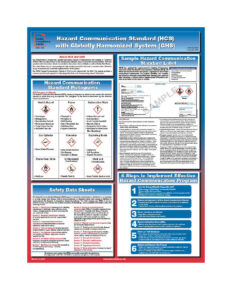Agriculture is one of the most dangerous industries in the world, with a higher rate of fatal injuries than any other industry. Farmers and ranchers face a variety of hazards on a daily basis, including exposure to hazardous chemicals, machinery accidents, and animal attacks. To protect workers from these hazards, it is essential to have a comprehensive farm health and safety policy in place.
A farm health and safety policy should address a variety of topics, including:
- General safety guidelines
- Specific hazards associated with farming operations
- Procedures for reporting and investigating accidents
- Training requirements for workers
- Emergency response plans
There are many resources available to help farmers and ranchers develop a farm health and safety policy. The Occupational Safety and Health Administration (OSHA) offers a variety of resources, including a sample farm health and safety policy template. Other organizations, such as the National Institute for Occupational Safety and Health (NIOSH) and the American Society of Agricultural Engineers (ASAE), also offer resources on farm safety.
Policy Development
To create an effective farm health and safety policy, it is important to involve workers in the development process. Workers have firsthand knowledge of the hazards they face on the job, and they can provide valuable input into the development of a policy that will protect them. It is also important to review the policy regularly and update it as needed to address new hazards or changes in operations.
Once the policy is developed, it is important to communicate it to workers. This can be done through a variety of methods, such as posting the policy in a central location, holding safety meetings, and providing training to workers. It is also important to enforce the policy and hold workers accountable for following it.
Policy Implementation
Implementing a farm health and safety policy can be a challenge, but it is essential to protect workers from hazards. There are a number of steps that farmers and ranchers can take to implement a policy effectively, including:
- Providing training to workers on the policy and on specific hazards associated with farming operations.
- Enforcing the policy and holding workers accountable for following it.
- Regularly reviewing the policy and updating it as needed to address new hazards or changes in operations.
- Involving workers in the development and implementation of the policy.
By taking these steps, farmers and ranchers can create a safe and healthy work environment for their employees.
Conclusion
A farm health and safety policy is an essential tool for protecting workers from hazards. By developing, implementing, and enforcing a comprehensive policy, farmers and ranchers can create a safe and healthy work environment for their employees.
In addition to protecting workers from hazards, a farm health and safety policy can also help to reduce costs. By preventing accidents and injuries, farmers and ranchers can save money on lost time, medical expenses, and workers’ compensation claims.
FAQ
What is a farm health and safety policy?
A farm health and safety policy is a document that outlines the procedures and guidelines that farmers and ranchers must follow to protect the health and safety of their workers.
What are the benefits of having a farm health and safety policy?
There are many benefits to having a farm health and safety policy, including:
- Protecting workers from hazards
- Reducing costs associated with accidents and injuries
- Improving employee morale
- Improving the farm’s reputation
How can I develop a farm health and safety policy?
There are a number of resources available to help farmers and ranchers develop a farm health and safety policy. The Occupational Safety and Health Administration (OSHA) offers a variety of resources, including a sample farm health and safety policy template. Other organizations, such as the National Institute for Occupational Safety and Health (NIOSH) and the American Society of Agricultural Engineers (ASAE), also offer resources on farm safety.

